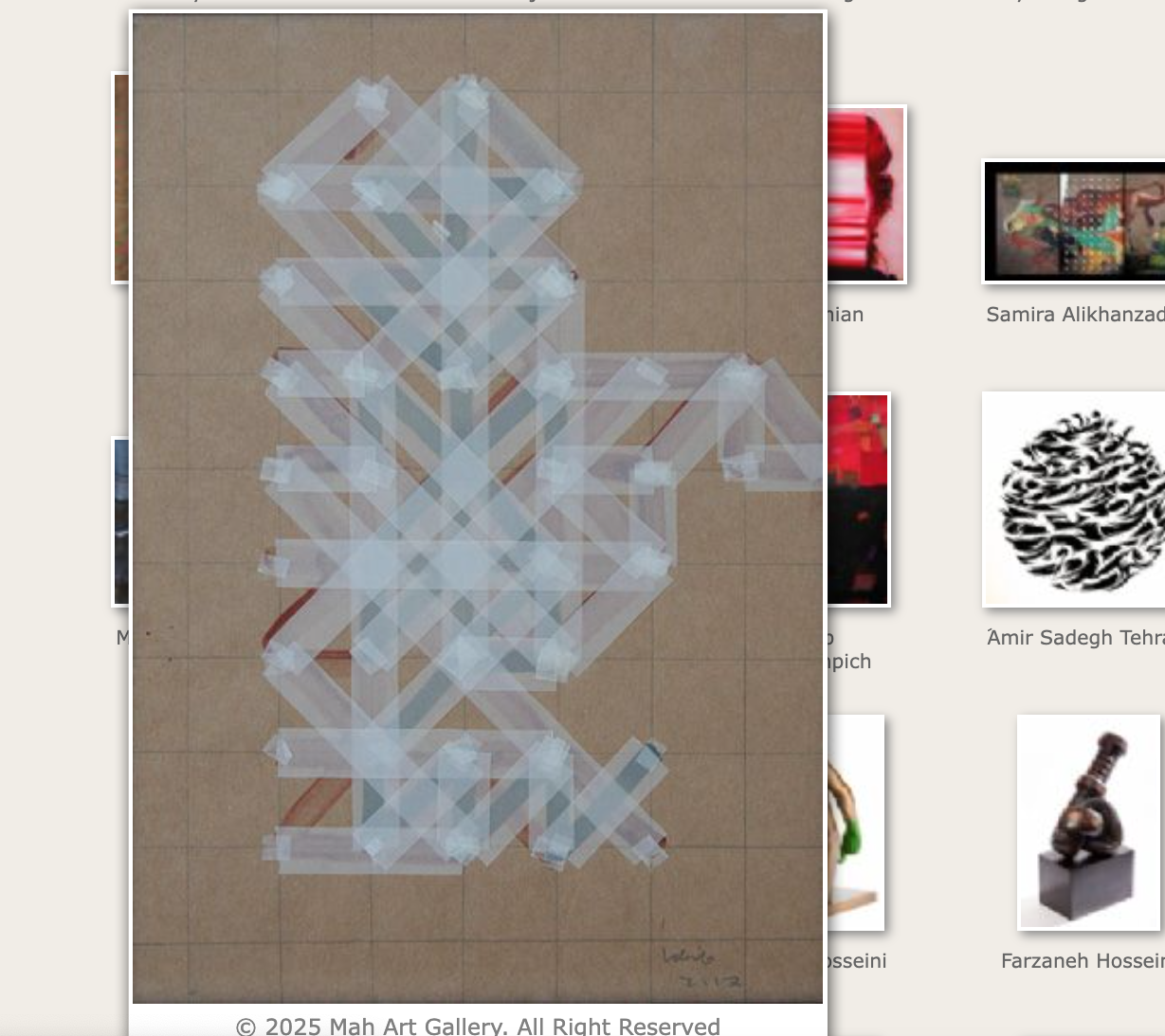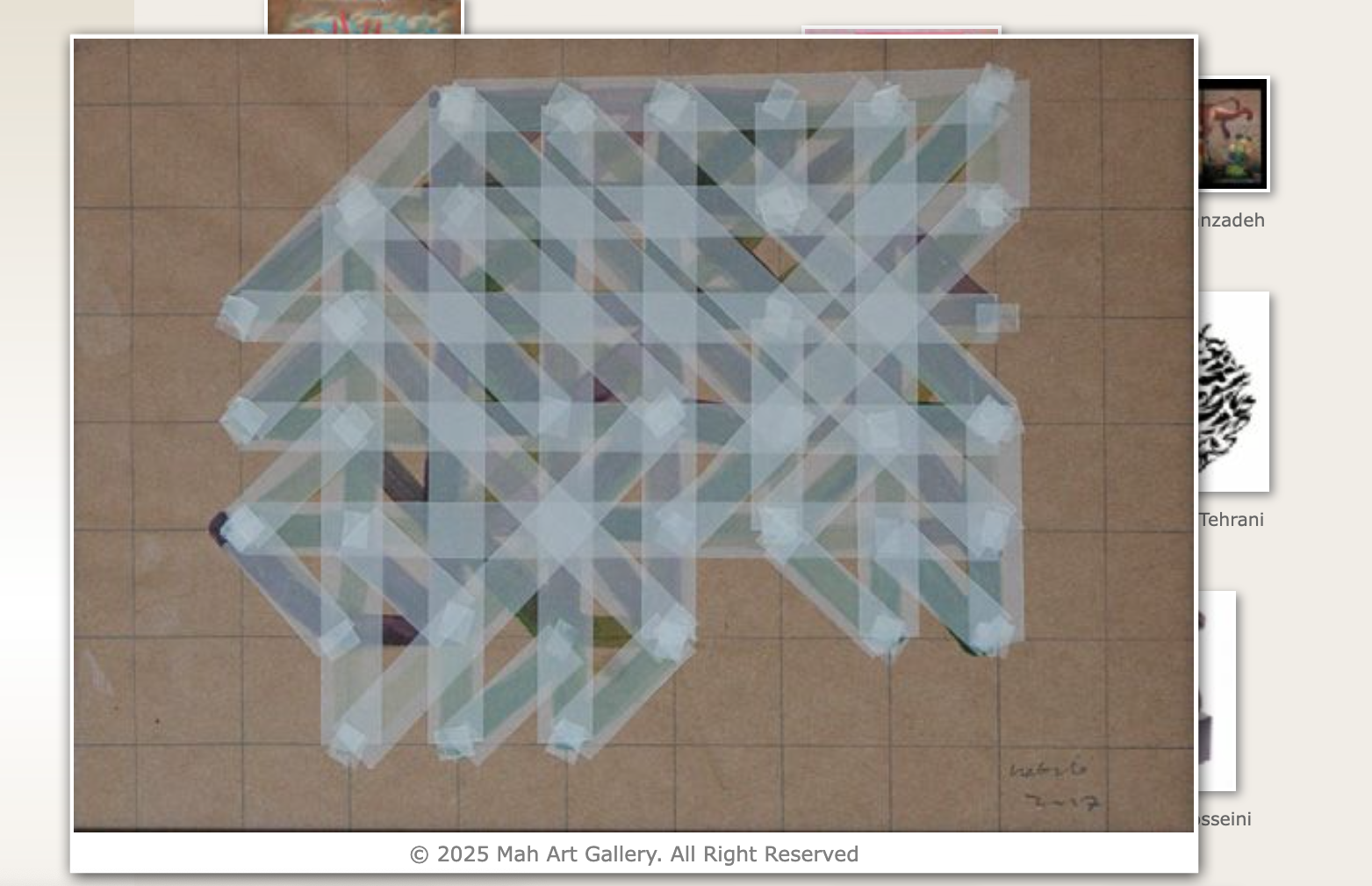The Aesthetics of Repetition
On Two Works by Habib Rezaei at Mah Gallery
Dr. Azam Hakim
Language : Englisch / persisch
The smallest and most fundamental semantic unit, the X and Y axes, have formed a framework to define concepts, much like in various sciences, including geometry. Each line, exactly like the others and in relation to them, moves within its comprehensive network and within the framework of … Read More …


